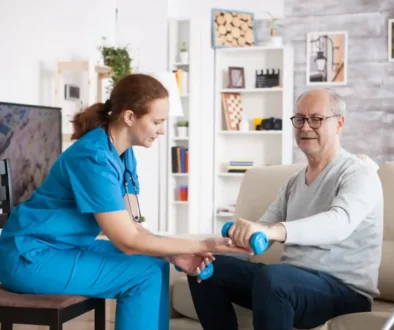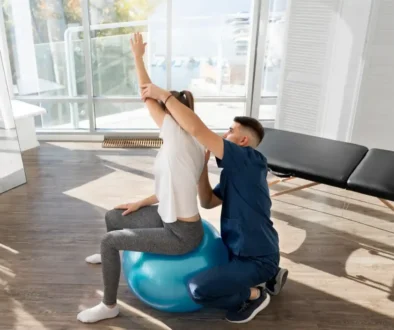Oral Placement Therapy: A Complete Understanding
Oral Placement Therapy (OPT) is an advanced and specialized treatment under the umbrella of speech and feeding therapy. For clients with concerns over speech clarity, feeding challenges, or oral motor skills in general, such as children and adults with special needs, OPT offers a structured, evidence-based approach. Our expert speech-language pathologists at Kent Healthcare in Dubai use Oral Placement Therapy as part of tailored treatment plans to attain enhanced speech clarity and feeding proficiency effectively.

What is Oral Placement Therapy?
Oral Placement Therapy (OPT) is a form of speech therapy that incorporates auditory, visual, and tactile input to maximize the loudness of speech and ability to feed. In contrast to most speech therapy, which relies on auditory and visual input, OPT involves tactile and proprioceptive inputs as well—patients can feel what they need to do to produce specific speech sounds or execute feeding activities.
By stimulating a variety of senses, OPT strengthens the routes from the brain to the speech and feeding muscles. Sara Rosenfeld-Johnson developed the approach, which is now well reputed for being an effective way of aiding muscle memory, articulation, jaw stability, and oral coordination overall.
The fundamental principle behind OPT is to provide sensory-motor feedback to allow the client greater control over speech production and feeding mechanisms. Utilizing well-designed devices like chewy tubes, bite blocks, horns, and straws, OPT specifically addresses specific muscle groups to enhance muscle strength, stability, and coordination. The devices serve as a bridge to transform basic oral movements into advanced, precise speech and feeding skills.
The Role of Speech Therapy in Managing Stuttering
OPT differs from typical speech therapy due to its use of tactile-proprioceptive feedback. Typical speech therapy is often based on “listen and repeat” approaches, which can be helpful for some but limiting for those with trouble in carrying out motor planning or sensory processing impairments.
Main Differences:
-
Multi-Sensory Approach: In contrast to the classical speech therapy focus on auditory and visual input, OPT adds tactile input, allowing patients to feel where the proper muscles must be. Engaging the sense of touch, clients are better able to understand how to move their muscles to create proper speech sounds or successful feeding motions.
- Hierarchy-Based Structure: Treatment is delivered through a series of structured steps, progressing from basic to complex movements. The hierarchical structure facilitates the building up of skills progressively, allowing clients to build their skills at their own pace.
- Target Muscle Memory: Unlike traditional methods reliant on repetition, OPT builds muscle memory by means of contact stimulation. In so doing, it allows clients to embed the correct movement required for speech production and feeding, which with time becomes second nature.
- Targeted Muscle Development: By using the aid of straws, chewy tubes, and bite blocks, OPT develops, withstands, and stabilizes muscles necessary for clear speech and effective feeding. These aids are carefully selected based on the client’s needs and are progressed gradually to match their ability level.
The Role of Sensory Input in Oral Placement Therapy
The role of sensory input is also a key influence on the efficacy of Oral Placement Therapy. Utilizing auditory, visual, and tactile stimulation, OPT gives complete feedback to the client during the course of treatment.
- Stimulation Auditory: Hearing speech models and sounds to construct speech clarity. Clients get used to associating certain sounds with proper muscle movement, making it easier to produce speech.
- Visual Stimulation: Seeing mouth movement to improve speech production ability. Clients see how different sounds are created, and visual feedback gives them the information they need.
- Tactile Stimulation: Using hands-on techniques and tools to build muscle awareness, stability, and accuracy. This is very beneficial for clients who experience sensory processing deficits or motor planning difficulties.
- Proprioceptive Input: Building muscle memory and coordination through guided exercises that require accurate oral movements. Proprioceptive feedback helps clients understand the position and movement of their muscles in speaking and feeding tasks
The combination of these sensory inputs allows OPT to address speech clarity and feeding difficulties more effectively than other methods of treatment. For children and adults with speech and feeding challenges, this integrative method accelerates progress and improves overall outcomes.
Who Can Benefit from Oral Placement Therapy?
Oral Placement Therapy is suitable for a wide range of individuals, such as:
- Speech Delay Children: They cannot produce clear speech sounds due to motor planning difficulties. OPT provides them with tactile input that enhances them in speaking speech sounds properly.
- Children with Feeding Difficulty: OPT procedures may improve chewing, swallowing, and oral control as a whole. By developing oral muscle strength and coordination, clients can enhance feeding outcomes.
- Patients with Neurological Disorders: Patients suffering from neurological disorders such as apraxia, dysarthria, or cerebral palsy who exhibit difficulty with speech clarity and oral motor control. OPT has directed exercises addressing specific muscle groups to enable speech production.
- Stroke Recovering Adults: OPT can restore speech clarity and feeding abilities lost as a consequence of brain damage or neurological impairment. By exploiting muscle memory and motor control, clients can relearn essential speech and feeding skills.
- Autistic or Sensory Processing Disorder Individuals: Providing them with tactile input, OPT can heighten awareness of speech movement and improve ability to communicate. It also addresses oral sensory sensitivity that may impact eating.
Oral Placement Therapy offers a unique, multi-sensory intervention that combines the aspects of speech therapy and motor-based intervention. At Kent Healthcare in Dubai, we ensure that we deliver personalized treatment plans that involve the utilization of OPT to enhance articulation of speech, feeding ability, and overall oral motor capacity. By providing each client with a balanced and successful intervention during therapy through auditory, visual, and tactile inputs, we promote a well-rounded outcome.
If you or a loved one are struggling with speech clarity or feeding, Oral Placement Therapy may be the solution you’ve been looking for. Contact Kent Healthcare today to learn how we can help.
Book an appointment
Booking an appointment with our team of professionals is just a few taps away. Book now!


